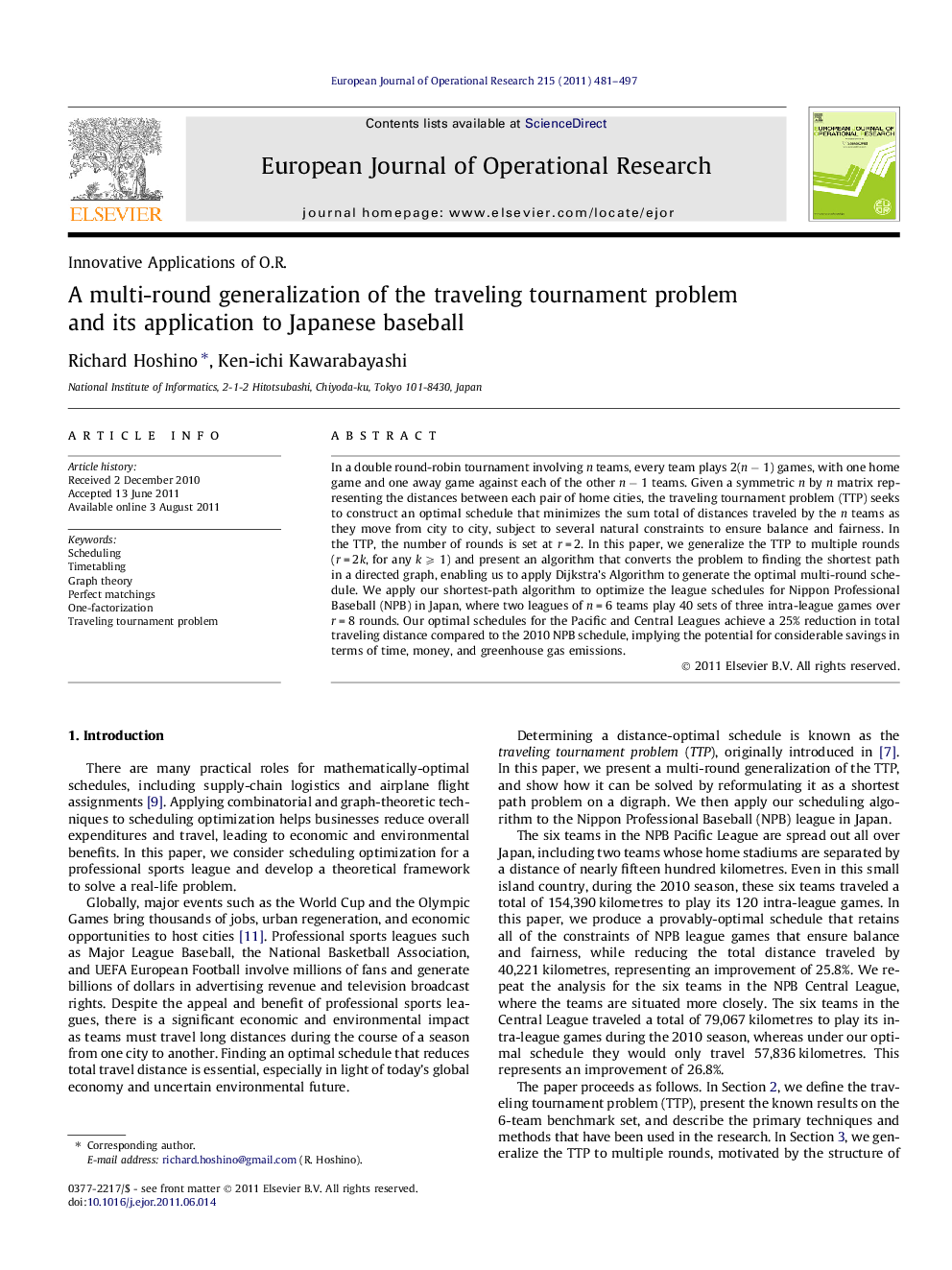| Article ID | Journal | Published Year | Pages | File Type |
|---|---|---|---|---|
| 478483 | European Journal of Operational Research | 2011 | 17 Pages |
In a double round-robin tournament involving n teams, every team plays 2(n − 1) games, with one home game and one away game against each of the other n − 1 teams. Given a symmetric n by n matrix representing the distances between each pair of home cities, the traveling tournament problem (TTP) seeks to construct an optimal schedule that minimizes the sum total of distances traveled by the n teams as they move from city to city, subject to several natural constraints to ensure balance and fairness. In the TTP, the number of rounds is set at r = 2. In this paper, we generalize the TTP to multiple rounds (r = 2k, for any k ⩾ 1) and present an algorithm that converts the problem to finding the shortest path in a directed graph, enabling us to apply Dijkstra’s Algorithm to generate the optimal multi-round schedule. We apply our shortest-path algorithm to optimize the league schedules for Nippon Professional Baseball (NPB) in Japan, where two leagues of n = 6 teams play 40 sets of three intra-league games over r = 8 rounds. Our optimal schedules for the Pacific and Central Leagues achieve a 25% reduction in total traveling distance compared to the 2010 NPB schedule, implying the potential for considerable savings in terms of time, money, and greenhouse gas emissions.
► We determine the distance-optimal schedule for a pro baseball league in Japan. ► We do this by generalizing the traveling tournament problem to multiple rounds. ► We accomplish this by converting the multi-round TTP into a shortest path problem. ► Our optimal schedule requires 25% less travel than last year’s actual schedule. ► This represents the potential for significant economic and environmental savings.
